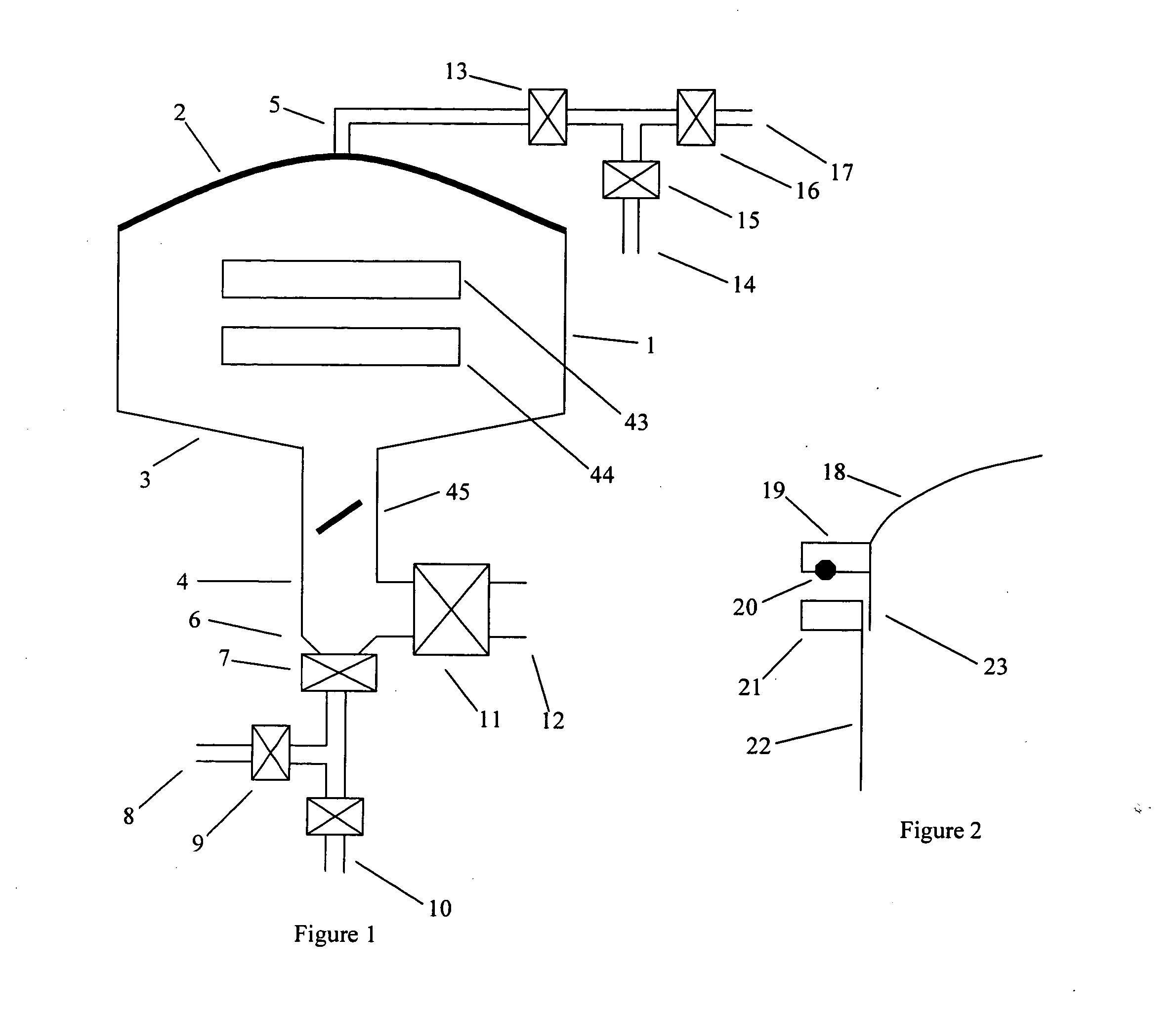Apparatus and method for in-situ chamber cleaning in a compound semiconductor etching system
- Summary
- Abstract
- Description
- Claims
- Application Information
AI Technical Summary
Benefits of technology
Problems solved by technology
Method used
Image
Examples
Embodiment Construction
[0012] The following description can be applied to any etching system but is most frequently used with a narrow gap parallel plate reactor where the top electrode also serves as the gas supplying showerhead.
[0013]FIG. 1 shows a process chamber 1 with lid 2. The lid is curved to allow water flow to provide washing of the lid itself, the chamber walls, the chamber bottom 3 and the lower plumbing lines. Splashing and spraying would allow for the cleaning of electrodes within the reactor (FIG. 1, items 43 and 44). Exhaust line 4 contains a butterfly throttle valve 45, for controlling chamber pressure connects to the main vacuum valve 11. Exhaust line 4 has a sloped bottom 6 to reduce the trapping or puddling of any cleaning liquid. Valve 7 is a vacuum isolation valve used to drain liquid from the chamber and vacuum line 4. Drain line 8 provides means of drainage during cleaning. Valve 9 provides a means of isolating the vacuum system from the backpressure of the drain. Valve 10 is clos...
PUM
| Property | Measurement | Unit |
|---|---|---|
| Solubility (mass) | aaaaa | aaaaa |
| Stability | aaaaa | aaaaa |
| Safety-related properties | aaaaa | aaaaa |
Abstract
Description
Claims
Application Information
 Login to View More
Login to View More - R&D
- Intellectual Property
- Life Sciences
- Materials
- Tech Scout
- Unparalleled Data Quality
- Higher Quality Content
- 60% Fewer Hallucinations
Browse by: Latest US Patents, China's latest patents, Technical Efficacy Thesaurus, Application Domain, Technology Topic, Popular Technical Reports.
© 2025 PatSnap. All rights reserved.Legal|Privacy policy|Modern Slavery Act Transparency Statement|Sitemap|About US| Contact US: help@patsnap.com



